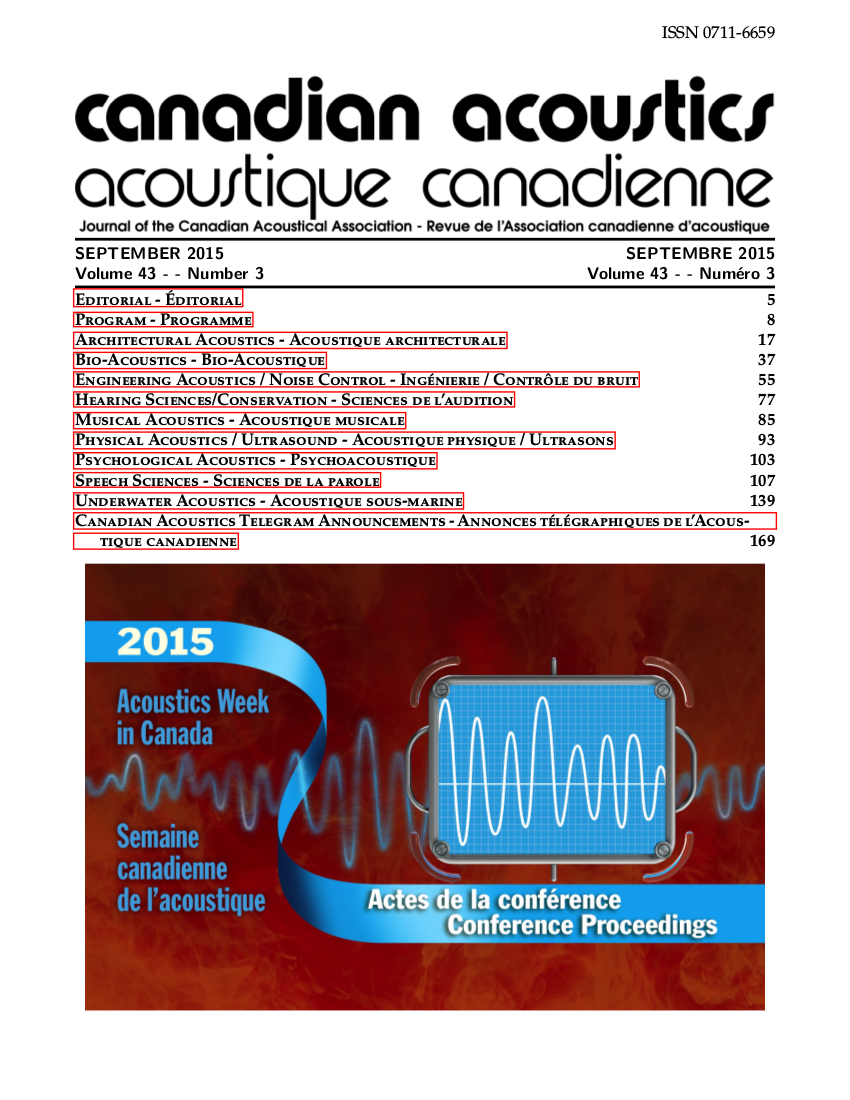Use of auditory steady-state responses in measuring the occlusion effect of hearing protection devices.
Abstract
The most commonly used solution to protect workers from noise exposure consists in using hearing protection devices (HPDs). An important parameter about HPD is the wearing time, since it can decrease the effective protection provided by HPD. However, the recommended wearing time for limiting exposure to noise is not always respected. The occlusion effect (OE) is one of the reasons often given to justify the non-use of HPD: the occlusion of the ear canal induced a modification of the wearer’s voice perception, which creates a discomfort that sometimes brings people to remove their HPD. Present methods of OE measurement have limitations. Objective measurements using microphone do not asses bone conducted sounds directly transmitted to the cochlea and psychophysical measurements at threshold are biased due to the low-frequency masking effect from test-subjects’ physiological noise, in addition to be affected by the variability inherent in subjective measures.
We investigated using auditory steady state responses (ASSR) as a technique which might overcome limitations of these other methods. ASSRs were recorded in eight normal hearing adults, using both “normal” and “occluded” conditions. Pure tone stimuli (250 and 500 Hz) were amplitude modulated at 40 Hz and presented through a forehead bone vibrator. “Physiological” OE was calculated as the average difference between the normal and occluded conditions using linear least-square regression of ASSR amplitude data.
Physiological OEs were expected to be different from psychophysical OEs, because we used supra-threshold stimulation levels to eliminate the low-frequency masking effect. However, results suggest that the effect of low-frequency masking may not be as large an influence as previously assumed at 250 Hz (87.5% of subjects at 500Hz, and 25% of subjects at 250 Hz had physiological OEs that were greater than psychophysical OEs). Further research, using an extended frequency range, should be done to validate this hypothesis.
Additional Files
Published
How to Cite
Issue
Section
License
Author Licensing Addendum
This Licensing Addendum ("Addendum") is entered into between the undersigned Author(s) and Canadian Acoustics journal published by the Canadian Acoustical Association (hereinafter referred to as the "Publisher"). The Author(s) and the Publisher agree as follows:
-
Retained Rights: The Author(s) retain(s) the following rights:
- The right to reproduce, distribute, and publicly display the Work on the Author's personal website or the website of the Author's institution.
- The right to use the Work in the Author's teaching activities and presentations.
- The right to include the Work in a compilation for the Author's personal use, not for sale.
-
Grant of License: The Author(s) grant(s) to the Publisher a worldwide exclusive license to publish, reproduce, distribute, and display the Work in Canadian Acoustics and any other formats and media deemed appropriate by the Publisher.
-
Attribution: The Publisher agrees to include proper attribution to the Author(s) in all publications and reproductions of the Work.
-
No Conflict: This Addendum is intended to be in harmony with, and not in conflict with, the terms and conditions of the original agreement entered into between the Author(s) and the Publisher.
-
Copyright Clause: Copyright on articles is held by the Author(s). The corresponding Author has the right to grant on behalf of all Authors and does grant on behalf of all Authors, a worldwide exclusive license to the Publisher and its licensees in perpetuity, in all forms, formats, and media (whether known now or created in the future), including but not limited to the rights to publish, reproduce, distribute, display, store, translate, create adaptations, reprints, include within collections, and create summaries, extracts, and/or abstracts of the Contribution.


